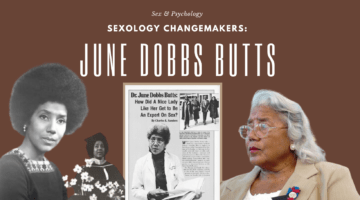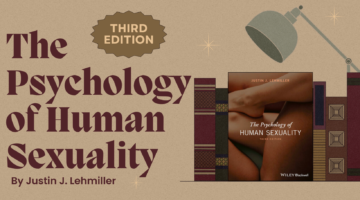Red Is More Than A Holiday Color—It’s Also A Sexual Signal
December 16, 2015 by Justin Lehmiller
Red is one of the most common colors associated with Christmas. From Santa’s suit to Rudolph’s nose to that tacky sweater Grandma gave you last year, red is everywhere during the holiday season. Red is much more than just a holiday color, though; in fact, scientists believe that it’s also a sexual signal all year round.
Several studies have found that heterosexual men see woman who are dressed in red as more sexually desirable than women wearing virtually any other color (e.g., blue, green, grey, etc.) [1]. Not only do men rate women in red as more attractive, but they are also more willing to ask these women out and spend larger amounts of money on them.
A similar finding has been documented among women. That is, red also enhances men’s attractiveness in the eyes of heterosexual women [2].
I should mention that people don’t necessarily even have to be wearing red in order for these effects to occur—simply standing against a red background seems to do the trick as well. Also, people don’t seem to realize that this effect is occurring (i.e., it occurs outside of conscious awareness).
So what’s the deal here? Some scientists have argued for an evolutionary explanation. Their reasoning goes something like this: women tend to be attracted to men with status and, because red has come to be seen as a status symbol, women should find men in this color to be especially attractive.
The association between red and status has pretty strong intuitive appeal. Red has historically been a sign of wealth and prestige—it’s the color of everything from royal robes to the carpet at celebrity events to the fastest and most expensive cars on the road.
By contrast, scientists argue that men are drawn to women in red not because it’s a status symbol, but because men have been conditioned to see this color as a sexual cue. Consider this: in both human and non-human primates, the female of the species literally turns red during sexual arousal and/or at peak fertility. For instance, women often develop a reddish rash that appears primarily on the chest when they’re sexually aroused, a phenomenon dubbed the “sex flush” by scientists [3].
But it’s not just that—our culture also tells women that painting their faces in red (i.e., with lipstick and rouge) is attractive and desirable, further strengthening the association between red and sex.
I am not aware of any research that has addressed whether the same patterns emerge across persons of different sexual orientations, so more work is certainly needed on this topic to determine its generalizability. In the meantime, though, keep in mind that as you dress up this holiday season, wearing red clothing may be viewed as a sign of more than just your holiday spirit.
Want to learn more about Sex and Psychology ? Click here for previous articles or follow the blog on Facebook (facebook.com/psychologyofsex), Twitter (@JustinLehmiller), or Reddit (reddit.com/r/psychologyofsex) to receive updates.
[1] Elliot, A.J., & Niesta, D. (2008). Romantic red: Red enhances men’s attraction to women. Journal of Personality and Social Psychology, 95, 1150-1164.
[2] Elliot, A. J., Niesta Kayser, D., Greitemeyer, T., Lichtenfeld, S., Gramzow, R. H., Maier, M. A., & Liu, H. (2010). Red, rank, and romance in women viewing men. Journal of Experimental Psychology: General, 139(3), 399.
[3] Masters, W., & Johnson, V. (1966). Human Sexual Response. Boston: Little, Brown.
Image Source: 123rf.com/Igor Mojzes
You Might Also Like:

Dr. Justin Lehmiller
Founder & Owner of Sex and PsychologyDr. Justin Lehmiller is a social psychologist and Research Fellow at The Kinsey Institute. He runs the Sex and Psychology blog and podcast and is author of the popular book Tell Me What You Want. Dr. Lehmiller is an award-winning educator, and a prolific researcher who has published more than 50 academic works.
Read full bio >


